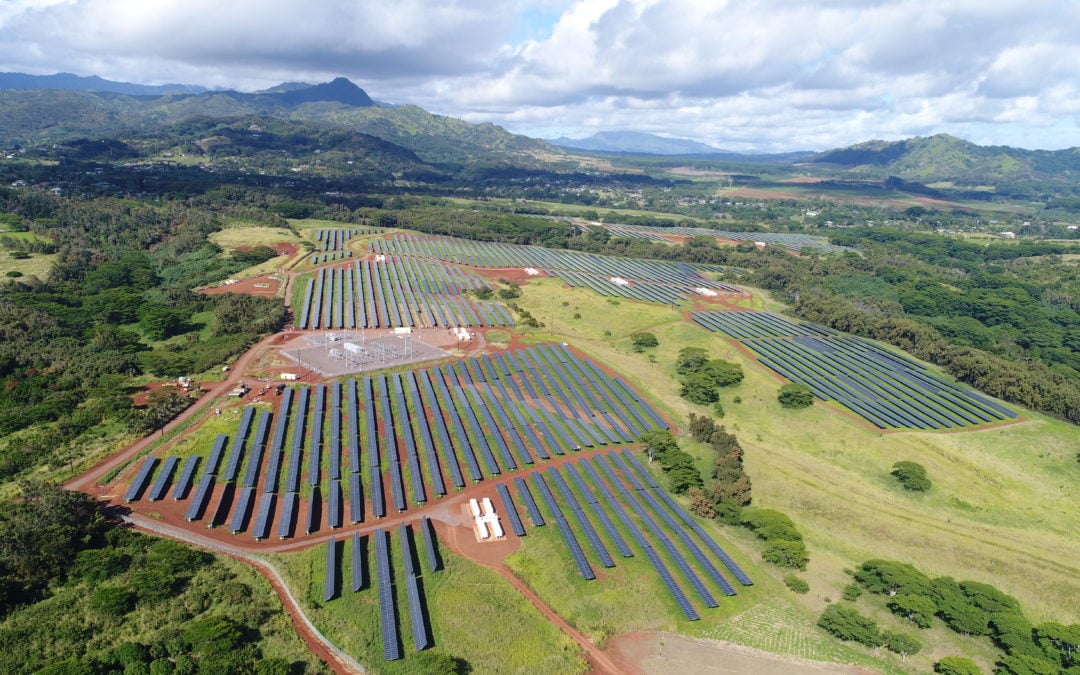In 2019, the multi-year pattern of record-breaking deployments of utility-scale and behind-the-meter (BTM) energy storage in the US continued. According to Navigant Research’s latest Energy Storage Tracker 4Q19, annual deployments of energy storage resources in the United States have increased from nearly 350 MW in 2018 to approximately 774 MW in 2019, with pipeline estimates indicating annual additions of approximately 1,400MW in 2020 and more than 4,000MW by 2023. Such volumes, while still speculative, are suggestive of developers’ convictions and are in line with the US energy storage industry’s target of adding 35GW of new capacity by 2025.
Driven by cost and performance improvements, an uptick in renewable generation capacity, grid-modernisation plans, improved opportunities for wholesale market participation, national and local government financial incentives and deployment mandates, phase-outs of feed-in tarffs (FITs) or net metering, and a desire for self-sufficiency and improved resiliency—2019 proved transformational for the energy storage industry.
Enjoy 12 months of exclusive analysis
- Regular insight and analysis of the industry’s biggest developments
- In-depth interviews with the industry’s leading figures
- Annual digital subscription to the PV Tech Power journal
- Discounts on Solar Media’s portfolio of events, in-person and virtual
Or continue reading this article for free
As we move into a new decade, the question is whether the burgeoning energy storage industry will be able to maintain its current path of rapid growth. All signs suggest that it will – and utility-scale energy storage procurements are a major reason why.
2020 and Beyond
This year brings considerable opportunities for the power and utilities industry to spearhead the economy-wide transition to clean energy. As local governments, capital markets, and other stakeholders organise around climate change, many power and utility companies are establishing their own clean energy goals.
In 2019, nearly 50 US electric power companies committed to significant carbon reduction goals including Duke Energy, Xcel Energy, and Arizona’s Arizona Public Service (APS). To achieve these goals, power companies and utilities will increasingly rely on energy storage to assuage volatility in wholesale markets as well as support additional renewables on the grid.
In the near-term, a review of several utility Integrated Resource Plans (IRPs) and Independent System Operator (ISO) interconnection queues underscores the rapid pace with which energy storage deployments are set to grow. Favourable economics and policies are driving the trend towards co-locating utility-scale energy storage with solar PV. For instance, in the PJM interconnection queue there are 398MW of utility-scale solar-plus storage projects and 699 MW of utility-scale stand-alone energy storage capacity poised to connect to the grid in 2020. Longer-term, there are 6,160MW of utility-scale stand-alone storage and 9,881MW of utility-scale solar-plus-storage listed. Moreover, solar-plus-storage projects account for over 43% of all capacity in the CAISO interconnection queue.
While it is important to note that not all proposed projects in ISO interconnection queues are built, for example close to 70% of proposed new MW in the New England ISO (NE-ISO) queue are withdrawn, the data provides important insight into the use-cases for storage that developers believe are needed and bankable. One prominent application for utility-scale solar-plus-storage is the provision of peak capacity. Although fossil fuels, namely natural gas, have historically been the primary choice for peaker-plants, there are an increasing number of cases across the US in which utility-scale renewables-plus-storage can compete directly on price.
For example, in early 2019 AES Distributed Energy, a subsidiary of The AES Corp., and Kauai Island Utility Cooperative (KIUC) announced the operation of the Lawa‘i Solar and Energy Storage facility on Kaua‘i’s south shore. The facility consists of a 28 MW solar PV and a 100MWh five-hour duration energy storage system. The new facility is intended to be used as a peaker plant and projected to deliver roughly 11% of Kaua‘i’s power, making the island more than 50% powered by renewables.
At US$0.11 per kWh, the utility-scale solar-plus-storage system provides energy significantly below the cost of diesel on the island and is projected to eliminate the use of 3.7 million gallons of diesel fuel each year. Despite the technology’s potential, market participation models for utility scale solar-plus-storage are not yet fully designed in most locales, limiting its potential contribution to reducing carbon emissions and costs. Fortunately, ISO’s around the country are working to address this obstacle.

NYISO initiates Hybrid Storage market participation project
At the start of 2020, the New York Independent System Operator (NYISO), initiated an effort to design a model for allowing large utility-scale energy resources paired with renewable generation to participate in its markets. The Hybrid Storage Model project will assess the viability of permitting co-located resources to receive a single dispatch schedule. Although the NYISO sees developers increasingly co-locating renewable generation with storage, its market rules do not include a participation model for such systems.
Co-located resources are currently required to be separately metered and have their own point identifier. While not yet finalised, it is likely the market design will be multifaceted, with some aspects of the design being implemented sooner than others. The elements include participation in NYISO’s energy, ancillary, and capacity markets; a settlement process; modelling for interconnection, planning and operations; and metering requirements.
The path forward
The trend of large solar plus storage projects driving growth in the utility-scale energy storage market is not expected to change any time soon. Stakeholders in the industry must recognise this trend and be prepared with dedicated offerings.
Energy storage vendors should design their products for seamless integration with solar PV plants, which are often connected with a DC-coupled architecture for maximum efficiency. Systems integrators and project developers should look to partner with solar PV providers early on to evaluate the potential to add storage to any existing or newly planned projects.
Utilities should lead the industry in providing answers through continued development of integrated resource planning frameworks that reflect accurate technology cost and resource operating characteristics at sufficient spatial-temporal granularity to examine operation for a range of grid services.
